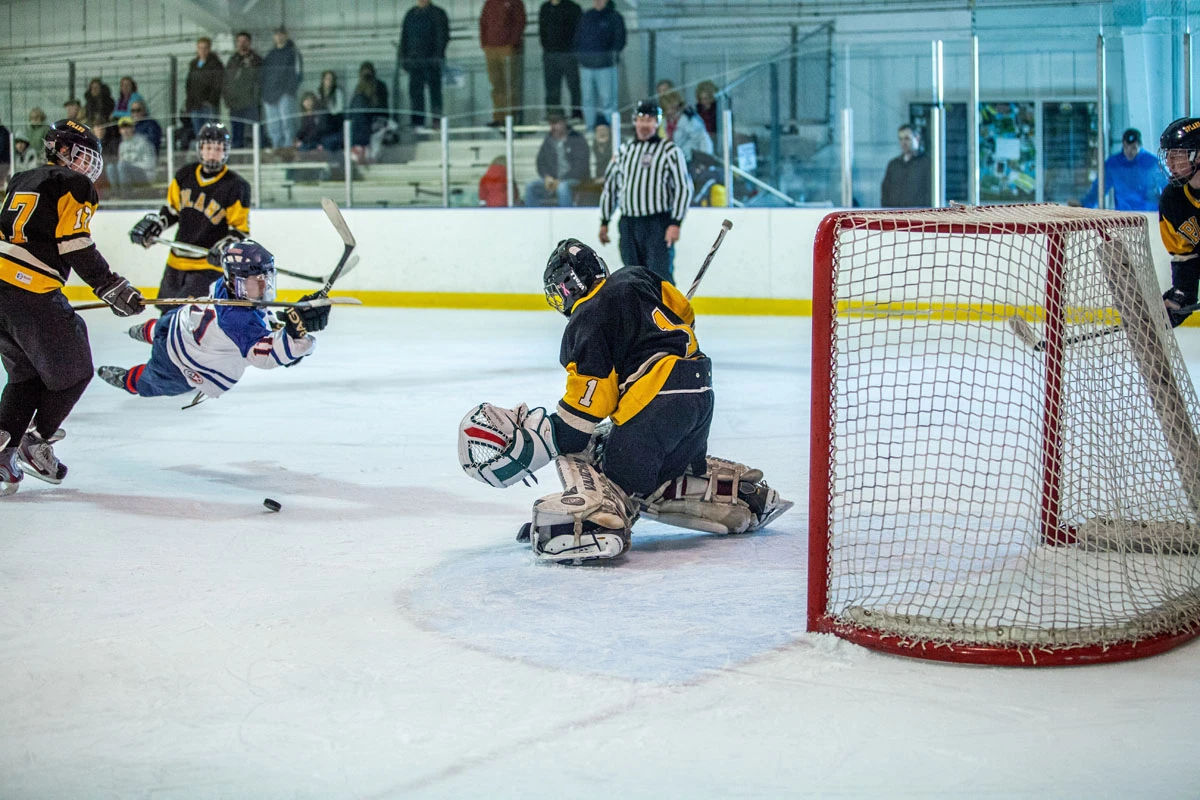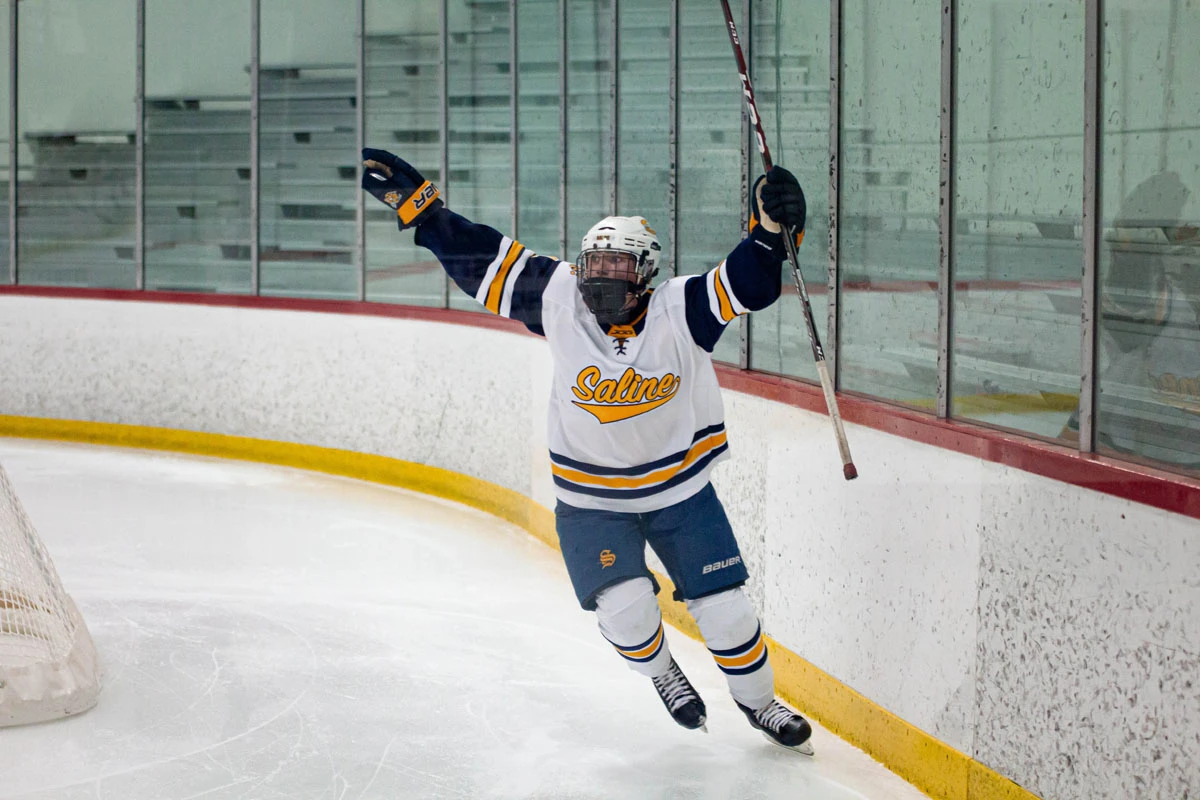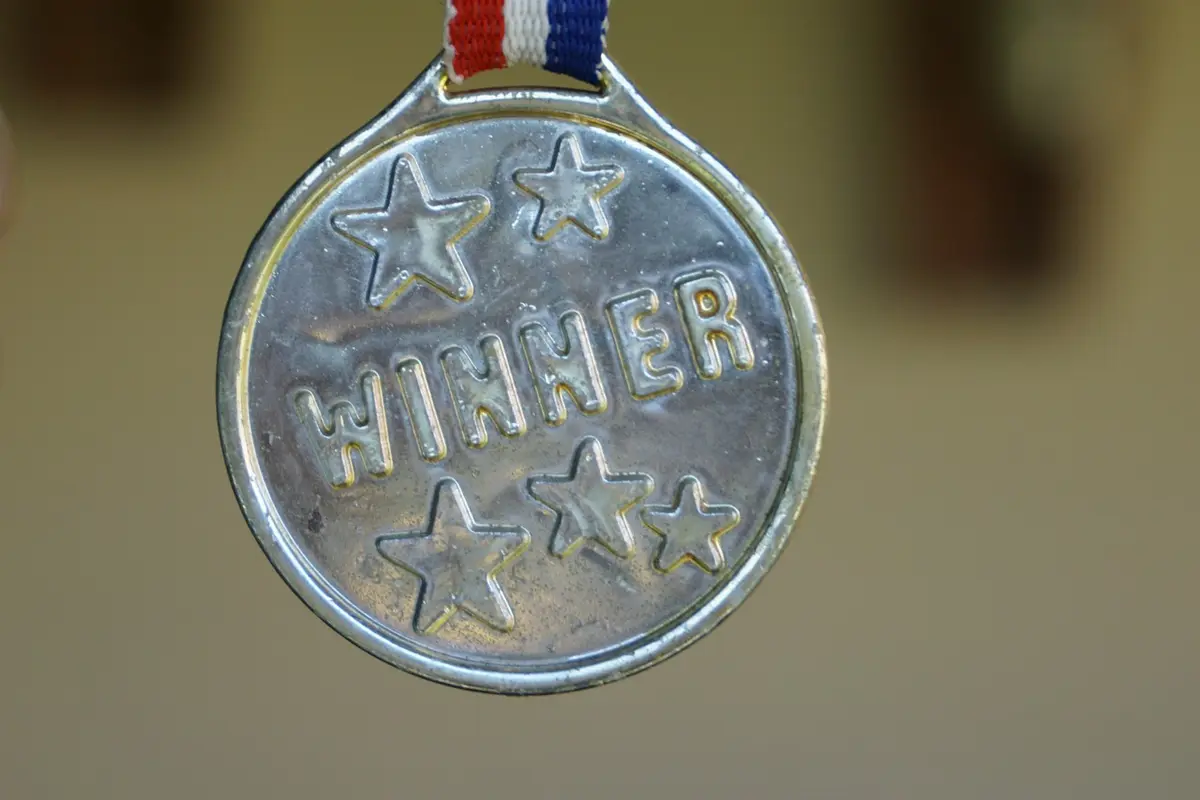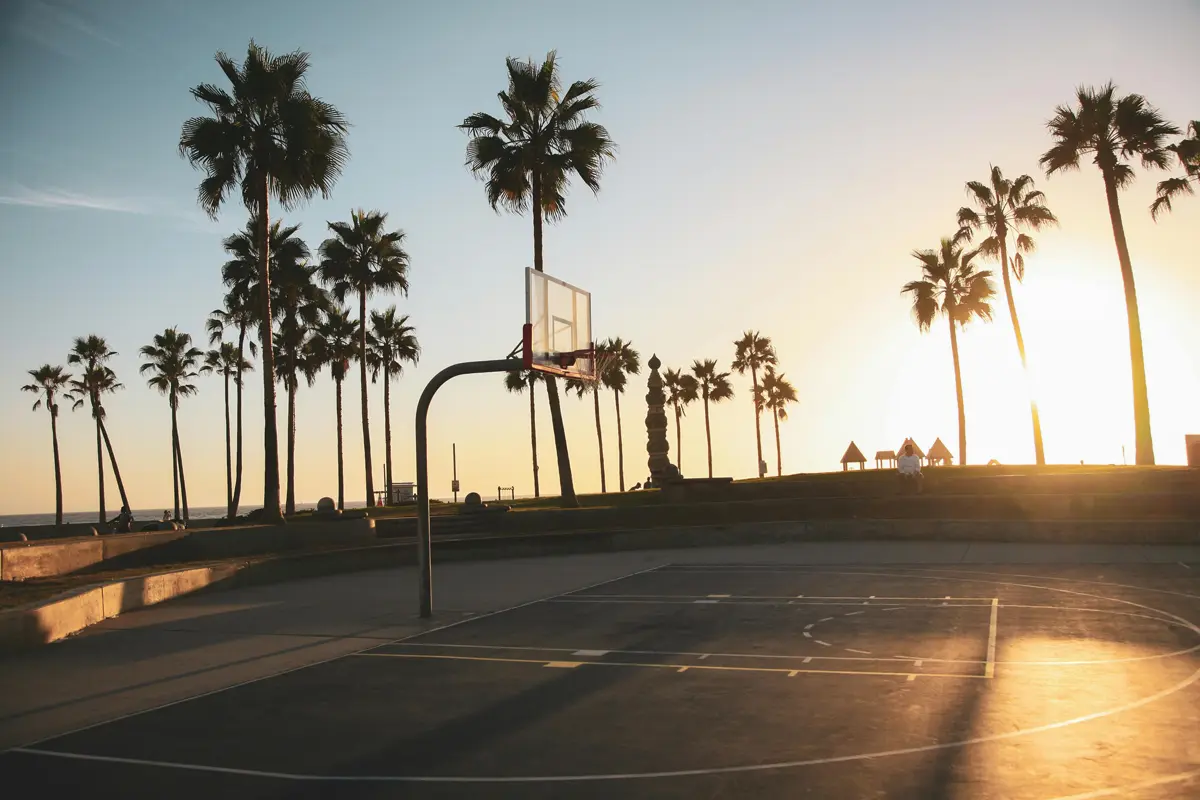Didn’t think learning to play hockey as an adult was a thing? Well, it definitely is, and we’ll give you the lowdown on how to get into the game of hockey as a grown-up. Whether you’re male, female, a former hockey player, or a complete beginner, there are hockey leagues for you!
With learning and developing skills and the ice, getting the proper equipment, and finding a local league or team, you’ll be well on your way to experiencing all that this fun and competitive sport has to offer. Of course, you’ll also need to understand the rules and strategies of the game as well as how to condition your body for peak performance. This article will guide you through all that and more.
So get ready to lace up your skates, grab your stick, and channel your inner Wayne Gretzky. If you’re already fired up to find a league before even reading the rest, check out our sports directory to find an adult hockey league near you.

Learn the Basics of Skating
If you don’t already know how to ice skate, you’re going to need to learn. Skating is a fundamental skill that every hockey athlete needs, but with some practice and dedication, you’ll be cruising around the rink in no time. If trying to learn on your own sounds intimidating, there are tons of local rinks that offer lessons for adults looking to improve their skating skills.
Here are some essential tips to help you get started:
- Learn proper form: To skate efficiently, it’s important to maintain a low center of gravity and bend your knees slightly. Keep your weight balanced over your skates and use their edges to push off and glide smoothly.
- Maintain proper body positioning: Lean forward slightly with your chest up, and keep your arms out in front for balance. Avoid hunching over or leaning too far back, as this can throw off your balance.
- Master stopping techniques: Learn how to stop using both the inside edge (snowplow stop) and the outside edge (hockey stop). These techniques will allow you to come to a controlled stop quickly during a game.
- Practice crossovers: Crossovers are an essential skill for turning quickly while maintaining speed. By crossing one foot over the other, you can make tight turns without losing momentum.
- Avoid these common mistakes: Don’t lift your feet too high off the ice or look down at your skates instead of ahead. These habits can hinder your progress and make it harder to improve.
Focus on these key elements of skating, and you’ll be well on your way to becoming a confident ice hockey skater in no time.
Stick and Puck (And Other) Skills You’ll Need to Start Playing Hockey
The primary hockey skills you’ll need to develop (besides the skating) will be your stick and puck skills. Stickhandling and shooting, along with passing and overall puck control, will not only enhance your overall performance in hockey but also give you a sense of freedom and control while playing the game.
One way to improve stickhandling is through off-ice training. Practice with a stickhandling ball or puck in your own space. Work on basic moves such as toe drags, dekes (essentially faking out your opponent–short for “decoy”), and quick hands. As you become more comfortable, challenge yourself with more complex drills to simulate game-like situations.
To hone your shooting skills, it’s important to practice regularly with a shooting target. Set up targets in different positions and distances from where you shoot. This will help improve accuracy and precision when aiming for specific areas of the net. Additionally, vary your shot types – wrist shots, slap shots, backhand shots – to expand your repertoire and keep goalies guessing.
Remember that practice makes perfect. You don’t need to aim to be NHL caliber, but if you work hard and dedicate time each week to focus on these skills, you’ll see vast improvements in your game in a short amount of time.
Understand the Positions, Rules, and Strategies of Hockey
It’s a good idea to familiarize yourself with the rules and strategies of the game. Once you do, a whole new world of tactical possibilities opens up before your eyes. You’ll learn to anticipate play, make smart decisions, and contribute effectively to your team’s success.
Hockey might seem like a whirlwind of sticks and pucks, but there’s an order to the chaos. The game is broken into three 20-minute periods. Five players from each team, including one goalie, are on the ice at any given time.
Each position has specific responsibilities that contribute to the overall strategy of the game. Forwards focus on scoring and creating offensive opportunities. Defensive players prioritize protecting their own net and shutting down opponents’ attacks. The goalie is crucial for stopping shots and acting as a last line of defense.
Offside and icing might sound like jargon now, but they’re vital concepts to understand. Offside is when an attacking player crosses into the offensive zone before the puck does. Icing, on the other hand, is when a player shoots the puck from their side of the center line all the way to the opponent’s goal line – it’s not allowed unless you’re killing a penalty.


Now, let’s dig into strategies. Hockey isn’t just about skating and shooting; it’s a chess match on ice. Positioning and teamwork reign supreme. Offensively, creating opportunities involves cycling the puck, using the boards for strategic passes, and setting up near the opponent’s net for those prime shots.
On defense, maintaining a strong formation, anticipating plays, and clearing the puck are your go-to moves. And don’t forget power plays (when the opposing team has fewer players due to penalties) and penalty kills (when your team is down a player) – these are critical moments to exploit or endure. So, whether you’re eyeing that slapshot or perfecting your poke check, understanding these strategies can elevate your performance and appreciation for the game.
Wrap your head around these concepts, and you’re well on your way to understanding the game’s rhythm. Many adult leagues abide by the rules of USA Hockey, so check out their full breakdown of the rules here.
Choose the Right Hockey Equipment
It’s essential to find hockey equipment that is the right fit for your body while providing maximum protection. Because, let’s face it, falling on the ice or getting hit by an errant puck can hurt, but the right gear can make it tolerable.
Hockey players require A LOT of gear. But don’t let that scare you off. To get started, the main things you’ll really need are a stick, a puck, and skates. At the least, you’ll be able to practice skating and basic skills. Once you’re ready to compete, whether in an adult hockey league or pick-up hockey, you’ll need to add to your gear collection.
We’ve listed our equipment recommendations below, along with links where you can research and purchase. If you’re on a budget, you can also check out secondhand sports stores for buying gently used gear (but maybe skip the mouthguard if you see that on the secondhand store shelf!). You can also explore rental options.


Hockey Gear List
Helmet: A quality helmet is an absolute must-have for hockey players because it protects the head from potential impact during the game. Brands like Bauer and CCM are very popular and renowned for their quality. The Bauer RE-AKT 85 Helmet offers a comfortable and customizable fit and also has a high safety rating in independent testing. Also, consider models like the CCM Tacks 310, which are designed for optimum protection and a good ventilation system. Remember, a good helmet should fit snugly without causing discomfort and, if possible, should have additional features like a face cage or shield for maximum protection.
Shoulder Pads: Shoulder pads guard against shoulder injuries and other upper body injuries. Check out Warrior’s QX3 Shoulder Pads, designed for high-level protection, or the STX Stallion HPR Shoulder Pads, known for their anatomical. low profile fit. Pads should fit comfortably and not restrict your arm movements.
Elbow Pads: Elbow pads, like the CCM Tacks line, protect your lower arms and elbows from injuries. An excellent option are the CCM Super Tacks AS-V Pro pads which are designed to balance protection, comfort, and mobility.
Gloves: Gloves are not just about warming the hands; they protect your fingers, knuckles, and wrists as well. Top-rated brands such as True and CCM offer excellent hockey gloves. Consider models like the True XC9 Pro Gloves famed for their flexibility and comfort, or the CCM Jetspeed FT1 for their elite protection and durability. They should have a snug but comfortable fit.
Shin Guards: Shin guards like the STX Surgeon RX3 and the CCM Tacks 9060 are designed to protect your knees and shins from falls and flying pucks. These should cover from the bottom of your knee to the top of your skate.
Ice Hockey Skates: In terms of skates, CCM and Bauer excel in providing quality and comfort. The CCM Jetspeed FT and Bauer Vapor skates offer a comfortable fit, sufficient ankle support, and appropriate blade design for all levels of play.
Hockey Pants or Girdle: Hockey pants protect your lower back, hips, and thighs. STX’s Surgeon RX3 and CCM’s Tacks pants offer excellent protection while allowing you to move freely. They should fit snugly but comfortably.
Mouthguard: Brands like Shock Doctor or Sisu offer quality mouthguards that ensure your teeth and mouth are protected from injury. Products such as the Shock Doctor Gel Max Power or the Sisu Aero Guard provide a custom fit, superior comfort, and excellent protection, making them a top choice among players, even those wearing full-face shields.
Neck Guard: The CCM Hockey 600 Cut Resistant Neck Guard or the Bauer Premium NLP21 Neck Guard are two great options, as they provide substantial protection against stray pucks or sticks. Even though neck guards are not always mandated in games or practices, they can prevent serious injury and should be seriously considered.
Protective Cup or Jock: Critical for male players, a protective cup such as the Bauer Hockey Performance Jock Shorts or the Shock Doctor Loose Hockey Shorts with BioFlex Cup can prevent serious pelvic injuries. These are fabricated with high-density foam for maximum protection without compromising comfort.
Hockey Stick: Finally, a hockey stick that fits your height and style of play is paramount. Brands like Bauer, STX, and CCM offer a wide variety of sticks tailored for different skill levels and playing styles. The Bauer Nexus 2N Pro, the CCM RibCor Reckoner, and the STX Stallion HPR2 are great choices.
Remember, safety and proper fit are key when selecting your hockey equipment. Testing and trying different brands and styles will ultimately lead to finding the best fit for you. No two players are alike, and the equipment should reflect your individual size, play style, and comfort.
Gear Maintenance
Regular inspection and cleaning of your gear will not only prolong its lifespan but also minimize the risk of injury. Make sure to follow manufacturer guidelines for maintenance.
Find a Local Adult Hockey League or Team (Beginner to Advanced)
One of the ways to get into the sport of hockey as an adult is to locate a nearby league or team (again, you can do this by searching our directory for adult hockey leagues near you). Joining a team will provide you the opportunity to play regularly and improve your skills on the ice.
If you’re a new hockey player, you’ll have the chance to learn from more experienced teammates and develop the skills you need to excel. Those players can also give you extra motivation.
When searching for a local league or team, find one that aligns with your goals and skill level. Some leagues are more competitive than others, so choose one that suits your abilities and desired level of intensity. And remember, if you’re just getting started playing adult hockey, there ARE beginner hockey leagues out there.
There are also hockey training camps specifically for adults. We highlighted some of them in our post on adult sports camps.
Sports Conditioning and Fitness For Playing Hockey
Improve your performance on the ice by focusing on your conditioning and fitness for hockey. Building strength and endurance will help you outlast opponents in fast-paced, intense games. Off-ice training plays a crucial role in preparing your body for the demands of this sport, especially if you’re getting your start at it later in life.
Here are five key areas to focus on:
- Cardiovascular Fitness: Hockey requires endurance. To help improve your endurance, engage in activities like running, cycling, or swimming to strengthen your heart and lungs. Aim for at least 150 minutes of moderate-intensity aerobic exercise each week.
- Strength Training: Incorporate exercises that target your upper and lower body muscles, such as squats, lunges, push-ups, and pull-ups. If you don’t belong to a gym, you can work on these skills at home doing bodyweight exercises.
- Agility and Flexibility: Practice agility drills like ladder runs or cone drills to improve quickness and change directions efficiently. Stretch regularly after workouts to maintain flexibility.
- Core Stability: Strengthen your core muscles for balance and stability on the ice. Include exercises like planks, Russian twists, and medicine ball throws.
- Nutrition for Hockey: Fuel your body properly for optimal performance. Focus on consuming a balanced diet with sufficient carbohydrates for energy, lean proteins for muscle repair, and healthy fats for overall health.
By incorporating regular off-ice training sessions into your routine while maintaining a nutritious diet focused on hockey-specific needs, you’ll be more physically fit and a better performer for your first game (or your 100th).
Embrace the Hockey Community and Enjoy the Journey


As an adult athlete, it’s important to surround yourself with like-minded individuals who share your passion. These connections can provide coaching, support, and encouragement along your journey. Getting into, or creating your own, hockey community is something you won’t regret.
The beauty of embracing the hockey community is that you’ll have a whole new network of people in your life. Whether it’s struggling to improve your skills or dealing with setbacks on the ice, having a supportive community can make all the difference. Cherish those post-game celebrations and bonding moments with teammates. Most of all, remember to enjoy every moment on and off the ice.
Conclusion
Whether you’re 20, 30, or 40 years old (or whatever age), it’s never too late to #growupandplay!









1 comment
Clare Martin
It was a good piece of advice when you told us to search for a local hockey league team that aligns with our goals and skill level since this will help us feel more motivated and allow us to develop the skills we need to excel as a player. My cousin wants to continue playing hockey after high school, so he is looking for an agency to sign him up for professional games soon. I hope he is able to find a reliable NCAA family advisor to help him out with this soon.